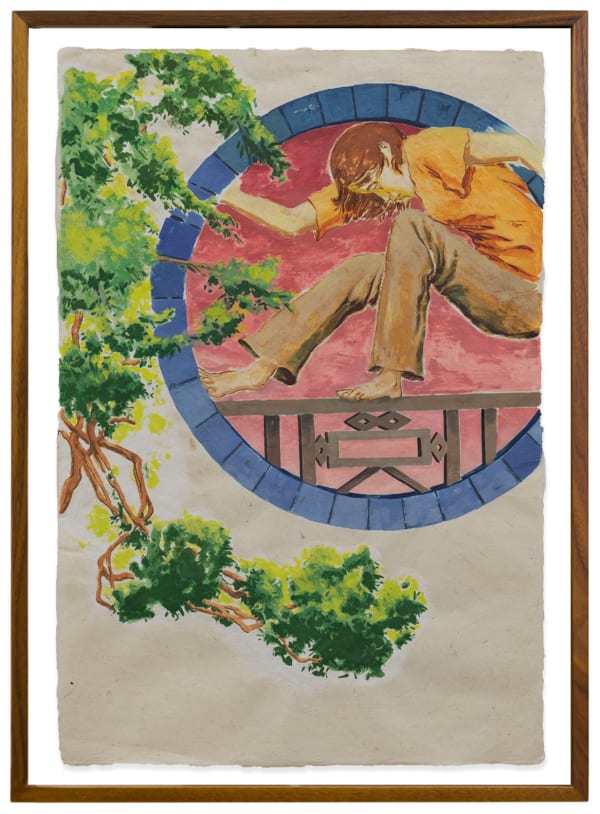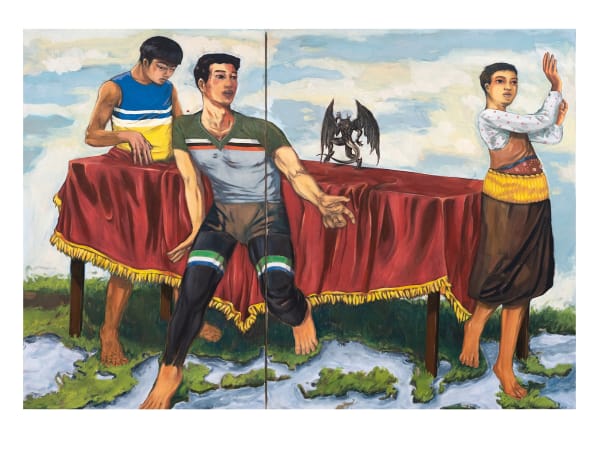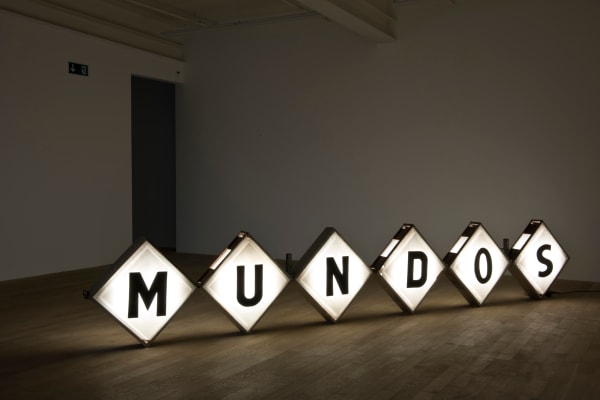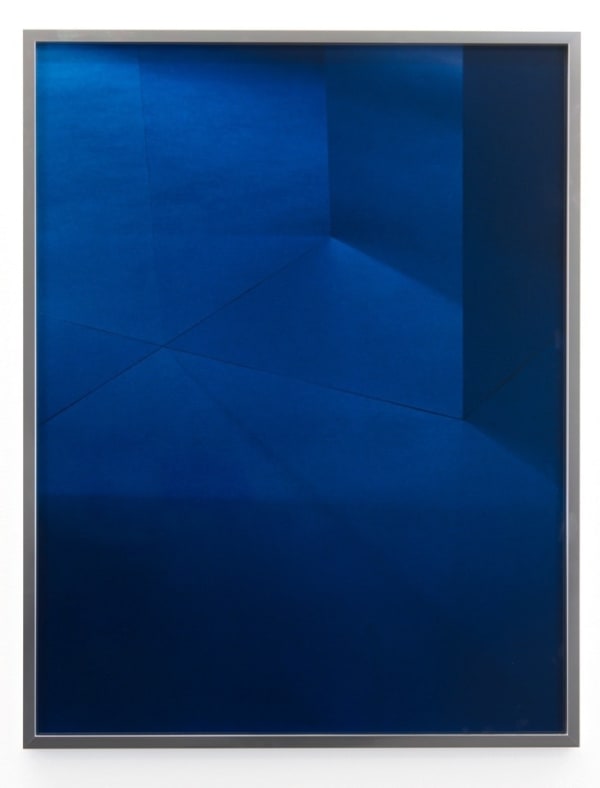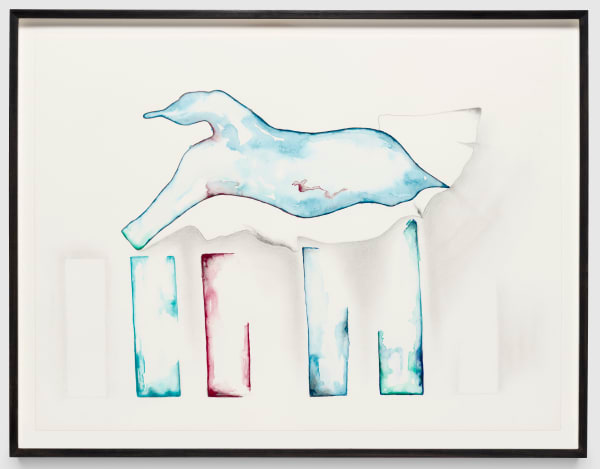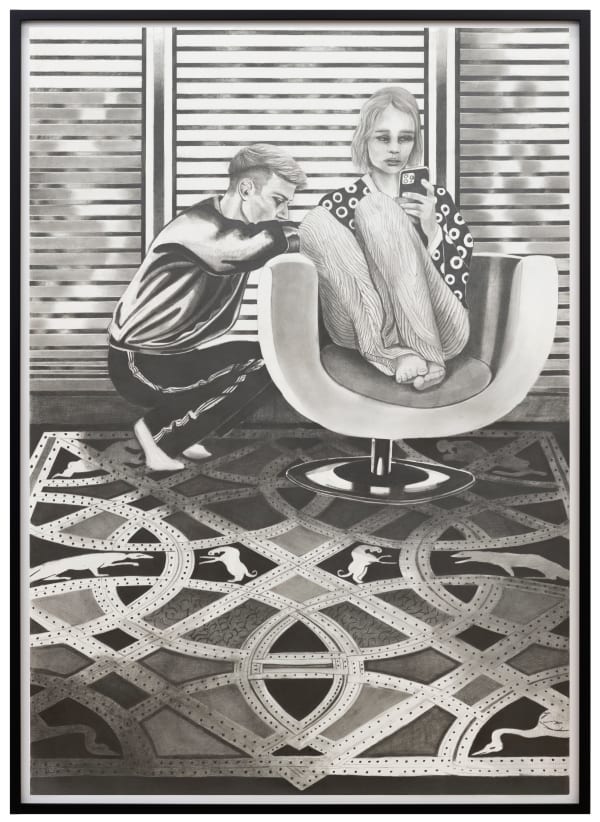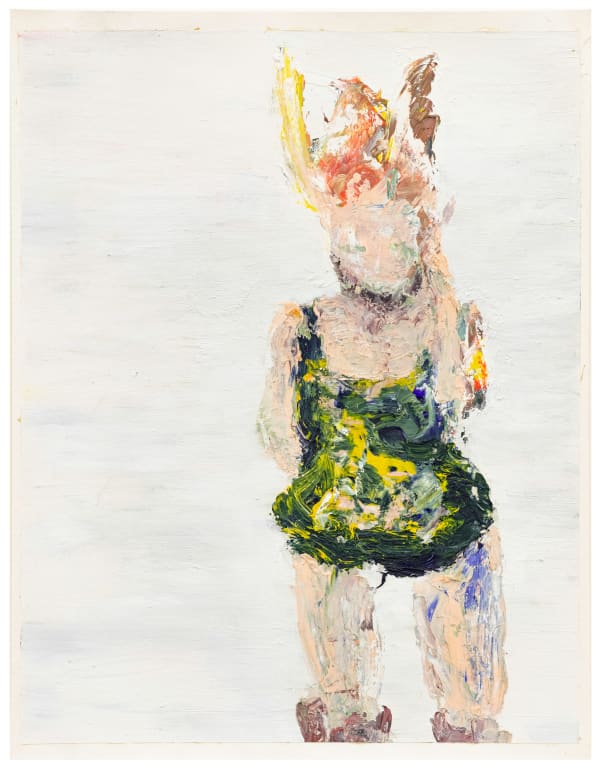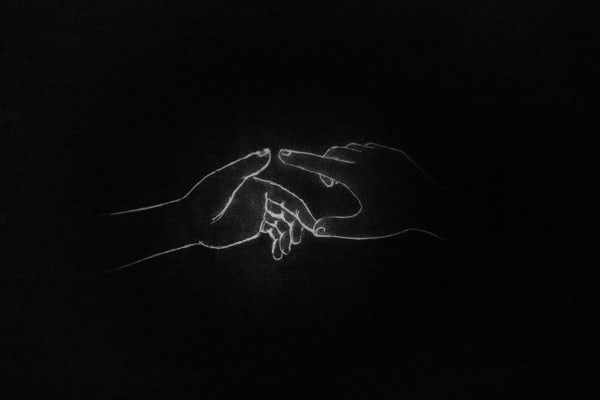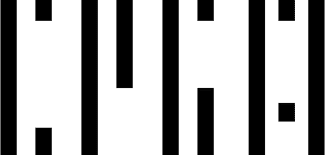-
Galerie Peter Kilchmann is pleased to present a new group exhibition in the gallery in Zahnradstrasse 21. The exhibition features works by the following Swiss and international artists: Marc Bauer, Valérie Favre, Zilla Leutenegger, Teresa Margolles, Valentin Rilliet, Grace Schwindt, Shirana Shahbazi, and Melanie Smith. In the Project Space, the gallery showcases for the first time the new animations by Francis Alÿs: Untitled ‘Lullaby’ (2024) and Manos Caminando (2023).
-
-
Room 1: The new work Escapade (2025, 76 x 51 cm), executed on Tibetan paper, and the monumental diptych Untitled (Stage) (2022, 180 x 260 cm) by Valentin Rilliet (*1996 in Geneva, where he lives and works), displayed on the left wall of the first room, inaugurate the group exhibition. The latter painting depicts two life-sized figures—drawing inspiration from Chinese socialist-realist propaganda imagery—dancing around a large table, seemingly situated on a nautical map scattered with islands. A small diabolical figure, inspired by the watercolor paintings of William Blake English poet and painter (1757–1827)—moves rhythmically across a red fabric strip on the stage. This significant painting marks the artist’s first work inspired by Chinese picture books (Lián Huán Huà). Untitled (Stage) thus represents Rilliet’s initial attempt to incorporate this specific source material into his artistic practice, investigating and evaluating the ways in which his cultural references can be translated into contemporary narrative forms.
-
 The installation Mundos (Worlds) (2016, 87.5 x 522 x 20.5 cm) by Teresa Margolles (*1963 in Culiacán; lives and works in Mexico City and Madrid) occupies the center of the gallery space. The neon sign, originally from a former bar in Ciudad Juárez, Mexico, emits a loud, penetrating hum which, according to the artist, references the ambient noise produced by machinery in the maquilas, the assembly factories of Ciudad Juárez. Measuring nearly six meters in length, the work points not only to life in Ciudad Juárez, but also to the divergent worlds we inhabit—evoking, for instance, the conflicts and systemic issues that separate two nations in a border region, or the socio-economic disparities between elites and the urban underclass. On the second wall from the left, Margolles’ work Pesquisas (Inquiries) (2016, 301–704.5 cm) is on display: thirty color prints of photographs depicting flyers posted on storefront windows, announcing missing women from Ciudad Juárez, Mexico, spanning from the 1990s to 2016. Over time, the information on these notices fades, the paper discolors, tears, and ultimately becomes part of the urban landscape
The installation Mundos (Worlds) (2016, 87.5 x 522 x 20.5 cm) by Teresa Margolles (*1963 in Culiacán; lives and works in Mexico City and Madrid) occupies the center of the gallery space. The neon sign, originally from a former bar in Ciudad Juárez, Mexico, emits a loud, penetrating hum which, according to the artist, references the ambient noise produced by machinery in the maquilas, the assembly factories of Ciudad Juárez. Measuring nearly six meters in length, the work points not only to life in Ciudad Juárez, but also to the divergent worlds we inhabit—evoking, for instance, the conflicts and systemic issues that separate two nations in a border region, or the socio-economic disparities between elites and the urban underclass. On the second wall from the left, Margolles’ work Pesquisas (Inquiries) (2016, 301–704.5 cm) is on display: thirty color prints of photographs depicting flyers posted on storefront windows, announcing missing women from Ciudad Juárez, Mexico, spanning from the 1990s to 2016. Over time, the information on these notices fades, the paper discolors, tears, and ultimately becomes part of the urban landscape -
A selection of five works from different years by Shirana Shahbazi (*1974 in Tehran, Iran; lives and works in Zurich) is on view: Magnolie-04-2013 (2013, 168 x 210 cm), Raum-Blau-01 (2017, 90 x 70 cm), Muster-01 (2017, 90 x 70 cm), Falling_05 (pink) (2024, 160 x 120 cm), and Schatten Schräg Grün (gelb) (2020, 23.5 x 18.5 cm). This selection highlights the central tension that has long defined Shahbazi’s artistic approach: the interplay between abstraction and representation within the medium of photography. Muster-01, for instance, depicts a constellation of black-and-white dots seen from various perspectives—some appear as if lying on the ground, others seem to fall from the sky, while others are kaleidoscopically distorted. The work was created in the studio by arranging tangible geometric objects with reflective surfaces, which Shahbazi photographed using analog film. In Magnolie-04-2013 (2013), she turns to a classical motif—represented here by an oversized magnolia blossom—and transforms it through her distinctive photographic process into a photographic work that oscillates between artificiality and abstraction. This work challenges viewers’ perception and awareness of reality, positioning them within a visual field where clarity and illusion are constantly in flux.
-
 Melanie Smith (*1965 in Poole, England; lives and works in London and Mexico City) is represented in the exhibition with three works, two of which date from 2007: Urban View – Highway 1 (110 x 150 cm) and Untitled (150 x 180 cm). Recurring themes in Smith’s oeuvre include modernity, utopia, alienation, and abstraction. In these two paintings, she explores varying degrees of focus, transforming the urban landscape into a dreamlike atmosphere. Through her manipulation of blurriness, the contours of buildings and streets dissolve into flat, geometric patterns. The city appears abstracted—almost dematerialized—merging into a dense sea of fog rendered in finely nuanced shades of grey. These paintings create a compelling tension between visibility and dissolution, between reality and abstraction.
Melanie Smith (*1965 in Poole, England; lives and works in London and Mexico City) is represented in the exhibition with three works, two of which date from 2007: Urban View – Highway 1 (110 x 150 cm) and Untitled (150 x 180 cm). Recurring themes in Smith’s oeuvre include modernity, utopia, alienation, and abstraction. In these two paintings, she explores varying degrees of focus, transforming the urban landscape into a dreamlike atmosphere. Through her manipulation of blurriness, the contours of buildings and streets dissolve into flat, geometric patterns. The city appears abstracted—almost dematerialized—merging into a dense sea of fog rendered in finely nuanced shades of grey. These paintings create a compelling tension between visibility and dissolution, between reality and abstraction. -

-
Room 2 : The second room is introduced by the painting Memory of a Dance (2024, 160 x 120 cm), two works on paper—Becoming a Landscape and Above a Structure (both 2024, 45.5 x 61 cm)—as well as two bronze sculptures, Bull (2022, 19 x 36 x 9 cm) and Dancer with Dagger (2022, 16 x 43 x 32 cm), by Grace Schwindt (*1979 in Germany; lives and works in London and Sicily). Central to Schwindt’s artistic practice is the wounded human body—an interest shaped by her long-standing engagement with classical sculpture, which she has studied in various museums through restoration history and in dialogue with archaeologists. In the painting Memory of a Dance, fragmented bodily elements appear to float in a nearly dance-like and timeless manner within a predominantly bluegrey, organically textured mass composed of freely flowing washes of paint.
-
-
The next wall features works by Marc Bauer (*1975 in Geneva; lives and works in Zurich). The work on paper Apocalypse de Saint Sever I (2024, 100 x 70) belongs to a series depicting young men and women in moments of quietness—some situated indoors, others viewed through windows. These figures inhabit familiar, seemingly safe interior spaces, and yet the weight of the outside world remains palpably present. The melancholy that permeates these scenes is genuine—a quiet mourning for a reality that resists the hopes and desires of these young individuals. The triptych Aube, Jour 7, Janvier 2025, Paris (2024, 180 x 460 cm) is inspired by the final scenes of the film L’Ambassade (Chris Marker, 1973). The work offers a panoramic view of dawn in Paris, captured over the course of seven days, and incorporates baroque linear elements reminiscent of Cy Twombly’s installation at the Menil Collection in Houston. The horizon—blurred as if seen through a fogged window—unfolds beneath a sky that glows with warm hues of yellow, orange, red, magenta, and aubergine, as if set ablaze.
-

-
 Valérie Favre (*1959 in Evilard, Switzerland; lives and works in Neuchâtel and Berlin) is represented in the exhibition with three works from her iconic series Lapine Univers, created between 2009 and 2013: Lapine Univers (2009, 102 x 75 cm), Lapine Univers (2009, 99.5 x 70 cm), and Lapine Univers (2013, 65 x 50 cm). The ‘Lapine’—a female rabbit figure—functions as a kind of alter ego for the artist. Neither a sweet bunny nor an invincible superheroine, the Lapine appropriates a cultural cliché, which Favre reconfigures into an autonomous and distinct visual universe. The figure is depicted, for instance, on stage under the glare of spotlights or wielding an electric guitar, wearing knee-high boots and a matching bodysuit in a rich olive green.
Valérie Favre (*1959 in Evilard, Switzerland; lives and works in Neuchâtel and Berlin) is represented in the exhibition with three works from her iconic series Lapine Univers, created between 2009 and 2013: Lapine Univers (2009, 102 x 75 cm), Lapine Univers (2009, 99.5 x 70 cm), and Lapine Univers (2013, 65 x 50 cm). The ‘Lapine’—a female rabbit figure—functions as a kind of alter ego for the artist. Neither a sweet bunny nor an invincible superheroine, the Lapine appropriates a cultural cliché, which Favre reconfigures into an autonomous and distinct visual universe. The figure is depicted, for instance, on stage under the glare of spotlights or wielding an electric guitar, wearing knee-high boots and a matching bodysuit in a rich olive green. -
The group exhibition concludes with three monotypes from 2024 by Zilla Leutenegger (*1968 in Switzerland; lives and works in Zurich): Don't look back in anger (99 x 66 cm), I'm not around (66 x 99 cm), and Mouse (66 x 99 cm). Inspired by the 2024 Olympic Games in Paris, Leutenegger created works that explore themes of warming up, relaxation, and particularly bodily movement through space. With her characteristically light touch, she reflects on discipline and exhaustion, generating atmospheres rich in emotional and physical tension. Visually, these works resonate with the aesthetics of pop-cultural icons such as Andy Warhol and David Hockney: vibrant, high-contrast color palettes, shadowless figures, and crisp forms. As in much of Leutenegger’s work, the female figure is central— depicted in various poses that resemble movement studies. These figures appear as “pretend-to-be characters,” occupying roles that oscillate between performative pose and the search for identity
-
-
Project Space : The video installations Manos Caminando (2023) and Untitled 'Lullaby' (2024) continue Francis Alÿs’s (*1959 in Antwerp; lives and works in Mexico City) ongoing investigation into play and simple, repetitive human gestures. These two animations are part of a group of six new short films first presented in the solo exhibition Francis Alÿs: Ricochet at the Barbican Centre, London, in 2024. Each film is composed of between one hundred and eight hundred identically sized pencil-on-paper drawings, filmed sequentially to create the animations. In this series, Alÿs focuses on hand and foot games, with each film accompanied by a sound, softly humming voices. Alÿs fragments the body and isolates the line of drawing to produce an experience that is both intimate and tactile. The first edition of each film includes the original drawings; the second edition is available for individual purchase, while the third and final edition will be sold as a complete set of all six animations.
Francis Alÿs, Marc Bauer, Valérie Favre, Zilla Leutenegger, Teresa Margolles, Valentin Rilliet, Grace Schwindt, Shirana Shahbazi, Melanie Smith
Galerie Peter Kilchmann
Zahnradstrasse 21, Zurich
, 11 April - 31 May 2025Be the first to know updates about Galerie Peter Kilchmann
* denotes required fields
We will process the personal data you have supplied to communicate with you in accordance with our Privacy Policy. You can unsubscribe or change your preferences at any time by clicking the link in our emails.
